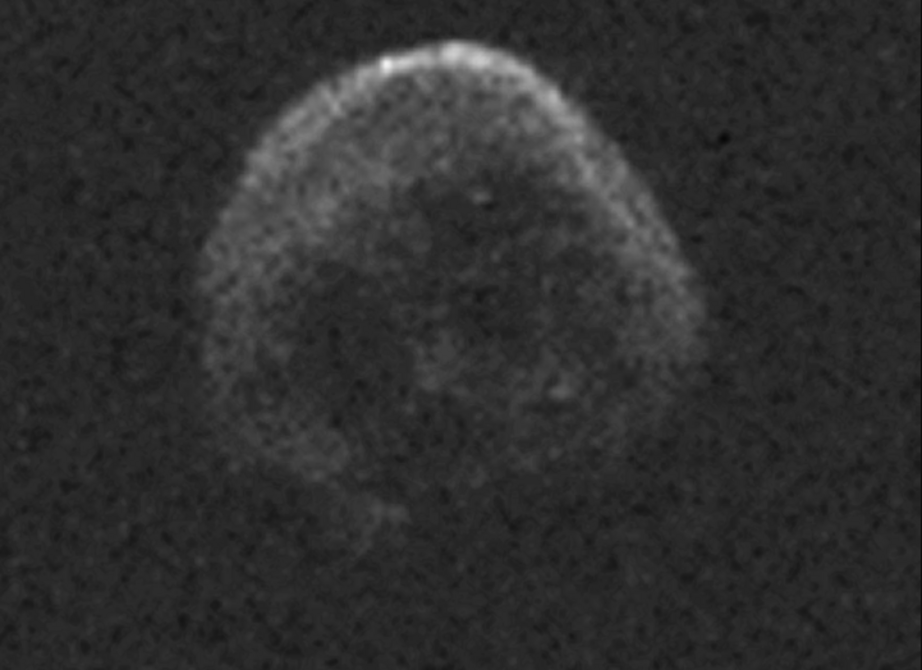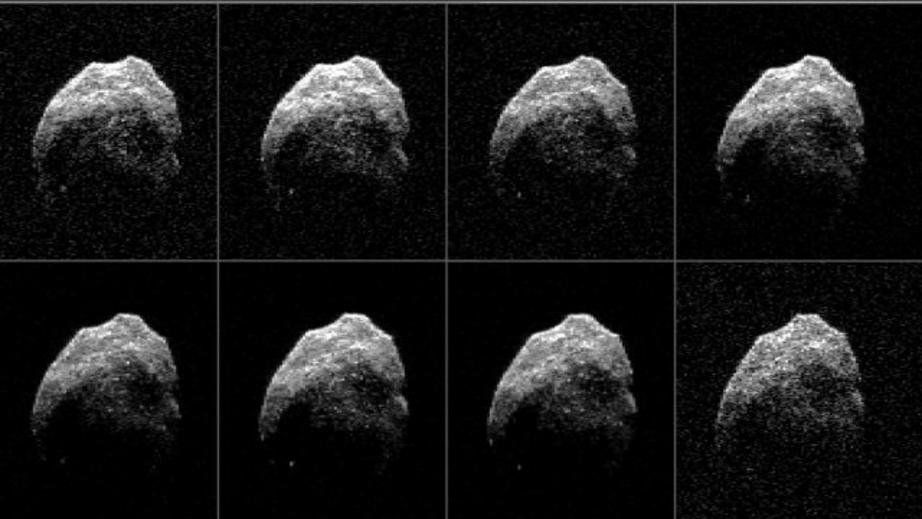A skull-shaped asteroid will approach Earth again in 2018
On Oct. 10, 2015, astronomers in Hawaii made a spooky discovery: a giant asteroid between 625 and 700 meters zipping through space, that at certain angles looks uncannily like a human skull.

Imagine seeing this through your telescope. (NAIC-Arecibo/NSF)
A few weeks later, on the night of Halloween, the skull-shaped asteroid flew by Earth at its closest proximity, just 486,000 km (about 300,000 miles) away, or roughly 1.3 times the distance to the moon. The asteroid 2015 TB145 will return for another fly-by in November, 2018, but significantly further away—105 times the average lunar distance.
During its 2015 approach, teams of astronomers from around the world, including NASA, worked to discern the asteroid’s characteristics. “On the one hand, we used optical telescopes from the Sierra Nevada Observatory in Granada, the Calar Alto Observatory in Almería and the La Hita Observatory in Toledo,” Spanish astrophysicist Pablo Santos-Sanz, from the Institute of Astrophysics of Andalusia, told Phys.org. “On the other, we analyzed it in the mid-infrared using the Very Large Telescope (VLT) VISIR instrument at the European Southern Observatory (ESO) in Cerro Paranal, Chile.”
Scientists were able to determine that the asteroid’s most likely rotation period—in other words, the length of its day—is 2.94 hours. (Though it’s possible it could also be 4.78 hours, which is also consistent with the data.) The asteroid also has a low reflectivity, only slight more than a piece of charcoal. These findings were published in February in the journal Astronomy & Astrophysics.

The asteroid depicted in eight individual radar images collected on Oct. 31, 2015. (NASA/JPL-Caltech/GSSR/NRAO/AUI/NSF)
Based on their observations, scientists speculate that 2015 TB145 is an extinct comet stripped of its volatile compounds from orbiting the sun one too many times. While asteroids usually have a rocky metallic composition and comets have a higher proportion of ice and rock, as well as a different type of orbit, at times it’s difficult to distinguish them with certainty.
Astronomers are already preparing for the next fly-by as another opportunity to collect more data. “Although this approach shall not be so favorable, we will be able to obtain new data, which could help improve our knowledge of this mass and other similar masses that come close to our planet,” Santos-Sanz said.
After this instance, the next exciting encounter won’t be until 2088.

